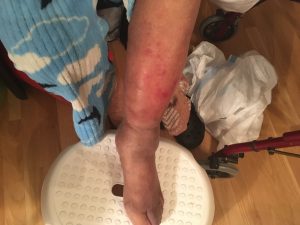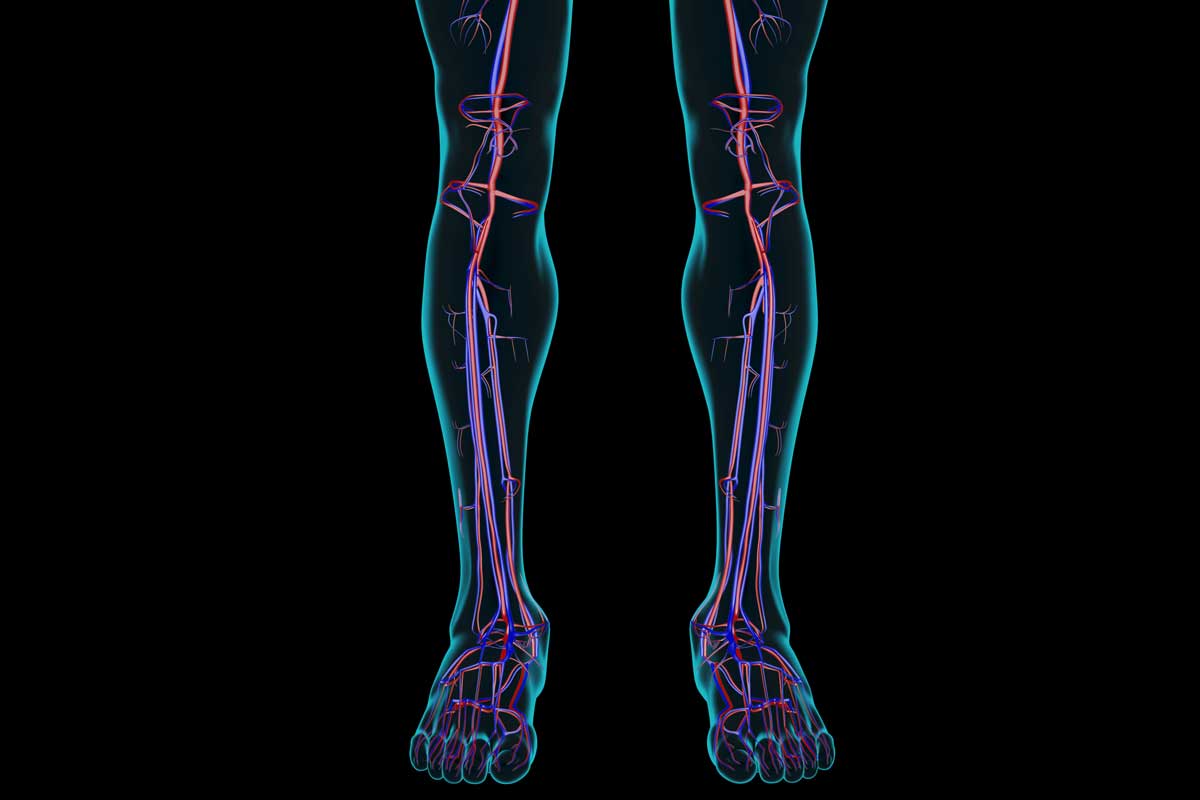Meet Doreen Smith, 83, of Glastonbury. Thanks to an interventional cardiologist at UConn Health she’s walking comfortably again and looking forward to her 84th birthday.

“My mom’s in her eighties and Dr. JuYong Lee saved her life,” shared Princess, Smith’s daughter. “To me he’s a lifesaver.”
Smith survived a heart attack in 2008. Shortly after being treated with a double-bypass surgery at a local hospital she started experiencing excessive and chronic leg swelling that just wouldn’t go away. For years doctors prescribed her diuretics and other new medications but none worked.
“My mom’s leg was always really swollen and looked horrifically concerning,” said Princess. “The blood in her leg was not circulating and it even led to the skin on her toes busting open and becoming infected at times.”
After becoming her mother’s dedicated caregiver Princess turned to UConn Health finally to find the answers and solutions her mom needed. “My mom has always taken care of me,” shared Princess. “It’s time for me to take care of her.” Smith is cared for by Dr. Lavern Wright at the UConn Center on Aging, who referred her to UConn Health’s Pat and Jim Calhoun Cardiology Center.
“We met Dr. Lee and he knew right away that my mother needed to have stents in her leg to open up her severe vein blockages,” said Princess.
September is Peripheral Artery Disease (PAD) Awareness Month. But PAD, artery blockages in the body’s extremities usually the legs, is just one condition in the family of conditions known as peripheral vascular disease (PVD). PVD impact the blood’s circulation inside blood vessels whether in the arteries or the veins of the body which can become narrowed or blocked. Blood vessel narrowing or blockages, most commonly in the legs, can often lead to pain or trouble walking.
“PVD diagnosis is sometimes very critical and medication may not always help,” says Lee, associate professor of medicine and director of vascular medicine and endovascular therapy and the noninvasive vascular laboratory.

Chronic leg swelling caused by PVD in the veins is because of the weakening of the body’s venous circulatory system. Normally, in leg veins blood flows against gravity up from the foot through the leg and back up to the heart. A strong, healthy heart muscle’s working keeps the body’s blood continuing to circulate while healthy veins have valves that help keep blood flowing in the right direction. But if the heart muscle becomes weakened or vein valves become weak or leak, or veins are blocked, blood can begin to pool inside the leg causing swelling and leading to skin changes such as the breakdown of the skin and fluid discharge.
For severe vein cases of PVD such as Smith’s the increased blood pressure through the veins in the leg can lead to pain in the leg or foot while at rest, or ulcer wounds. The risk factors for chronic venous hypertension are a family history or genetic predisposition, obesity, history of varicose veins or deep vein thrombosis (DVT).
After finally being diagnosed with venous PVD by Lee, Smith underwent a successful minimally invasive procedure in the cardiac catheterization laboratory in the Calhoun Cardiology Center to deploy iliac vein stents in her left leg to open up her severe vein blockages and restore proper blood flow in her left leg.
“My mom should have had stents a long time ago,” said Princess. “Her left leg swelling went away and she’s able to walk again. My mom’s very happy about that. It’s a big improvement.”
Princess stresses: “Dr. Lee is amazing. But he also is so compassionate – and we appreciate that in a doctor!”
The Smith family credits Lee with saving their mother’s life more than once.
“Dr. Lee actually saved my mom’s life twice,” says Princess. “I took my mom to the ED seven times. No one could tell us what was making her so ill. I finally called Dr. Lee and he said bring her to me. It turned out she needed her gallbladder removed!”
Princess adds: “We are so thankful for Dr. Lee.”
“I encounter many patients suffering from chronic leg swelling who have visited so many doctors with no answers,” says Lee. “I am so happy to finally offer a solution to my PVD patients and significantly improve their daily quality of life by having less leg swelling and skin changes.”
Lee says for its PVD patients, the Calhoun Cardiology Center has developed a new diagnostic algorithm to pinpoint the underlying cause of each patient’s chronic leg swelling with a systematic diagnostic approach.
According to Lee the Calhoun Cardiology Center’s initial patient data is showing that some of the chronic leg swelling patients have undiagnosed pulmonary hypertension, congestive heart failure, non-thrombotic iliac vein compression syndromes, venous insufficiency diseases or a combination of these diseases. Correct diagnosis of these conditions are critical to improve the patient’s symptoms depending on the etiology. This systematic diagnostic approach includes invasive or noninvasive diagnostic tests such as echocardiography, venous vascular ultrasound, right heart catheterization, and intravascular vascular ultrasound.
In fact, Calhoun Cardiology Center has a combined Echo/Vascular Lab for the patient’s convenience to undergo some of these tests in one place. Dedicated, experienced vascular ultrasound technologist Henry Chua performs special venous vascular ultrasounds to detect complex venous obstruction or insufficiency with high sensitivity. Patients are then referred to the appropriate specialists after correct diagnosis for care of the underlying causes of pulmonary hypertension or chronic heart failure. Others may receive comprehensive vascular care with minimally invasive or noninvasive therapies in the high-tech cardiac catheterization laboratory with intravascular ultrasound guided imaging for venous stenting, other catheter-based therapy, or venous ablation.



